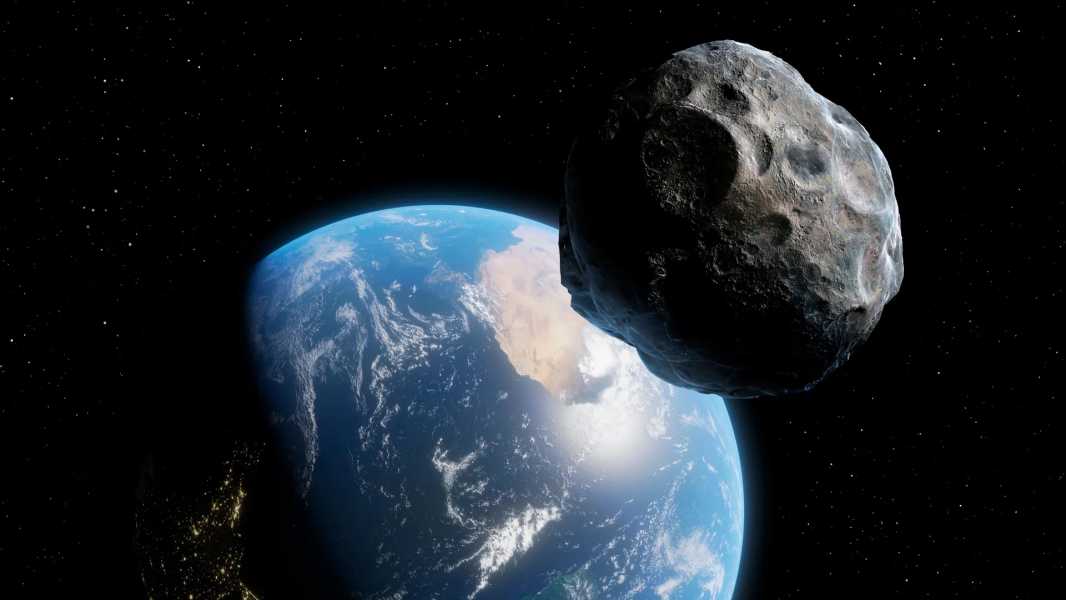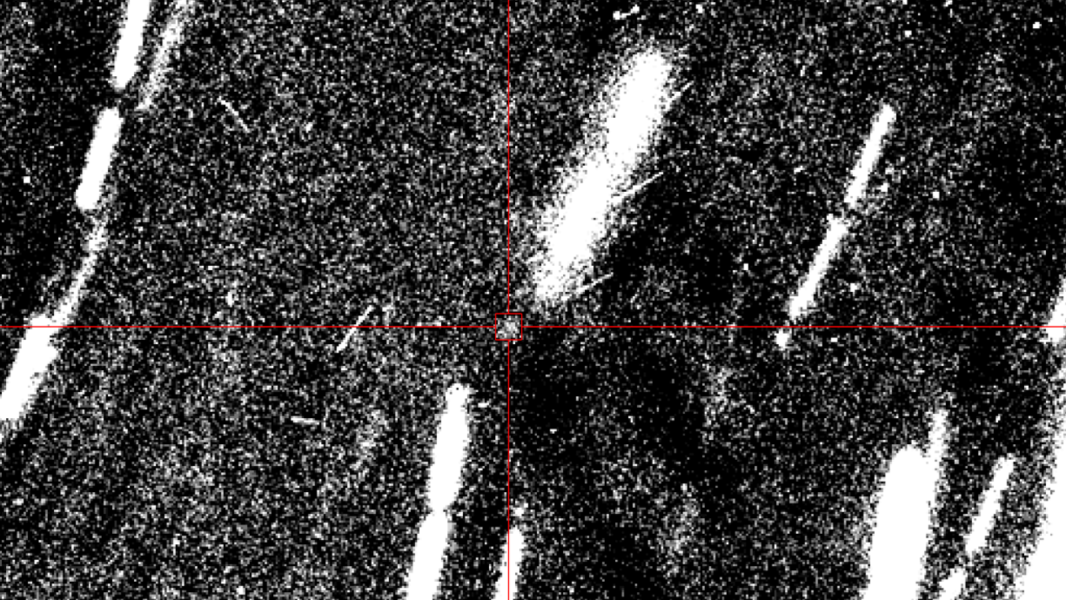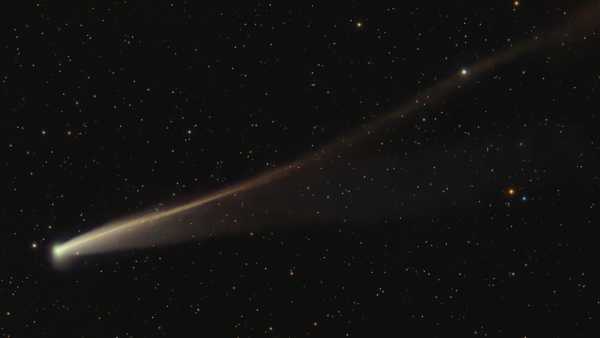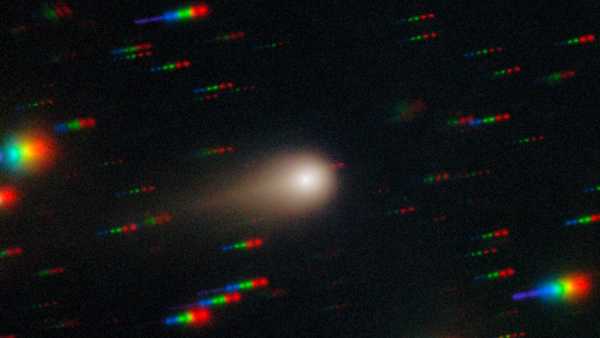
An asteroid flies past Earth. Research suggests there may be a hidden group of lunar fragments orbiting our planet. (Image credit: Mark Garlick/Science Photo Library via Getty Images)
Earth's mini-moon may be a fragment of an ancient block: A new study suggests that 2024 PT5 — a small rocky object dubbed a “mini-moon” when it was discovered last year — may have been ejected from the moon in a powerful impact many years ago, making it the second known example to orbit close to Earth.
This discovery hints at the existence of a hidden population of lunar debris traveling close to Earth.
“If there was just one object, it would be interesting, but it would be an outlier,” said Teddy Kareta, a planetary scientist at the Lowell Observatory in Arizona, in March at the 56th Annual Lunar and Planetary Science Conference in The Woodlands, Texas. “If there are two, we’re pretty sure it’s a population.”
New evidence
The Earth moves through a cloud of space debris, leaving a trail around the Sun. Some of this material is man-made — satellites and space junk — while some is rocky debris left over from collisions in the early Solar System. These near-Earth objects (NEOs) can pose a hazard, so they are monitored to make sure they don’t threaten our planet.
In August 2024, astronomers in South Africa discovered a new asteroid, known as 2024 PT5, moving close to Earth. 2024 PT5 was moving slowly, with a relative speed of just 4.5 miles per hour (2 meters per second), making it an ideal target for the Mission Accessible Near-Earth Object Survey (MANOS). Only nine other asteroids have been observed moving so slowly at closest approach.
Kareta, along with MANOS lead investigator Nick Moskowitz, also at Lowell, were interested in searching for moon rocks in space immediately after identifying the first such fragment in 2021. MANOS is designed to find and characterize near-Earth asteroids that might be easiest to visit with a spacecraft. That meant the mission was ideally suited to studying lunar samples, Kareta says. Within a week of 2024 PT5’s discovery, they had the Lowell Discovery Telescope aimed at the object.

Astronomers used the 2-meter Twin Telescope to create this image of asteroid 2024 PT5 in November 2024.
After studying 2024 PT5 in the visible and near infrared,
Sourse: www.livescience.com





